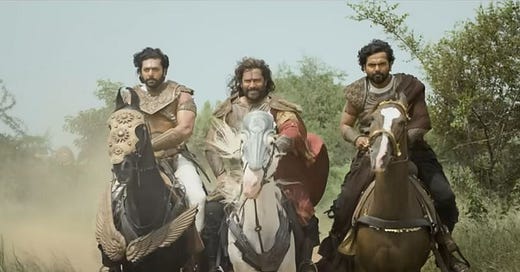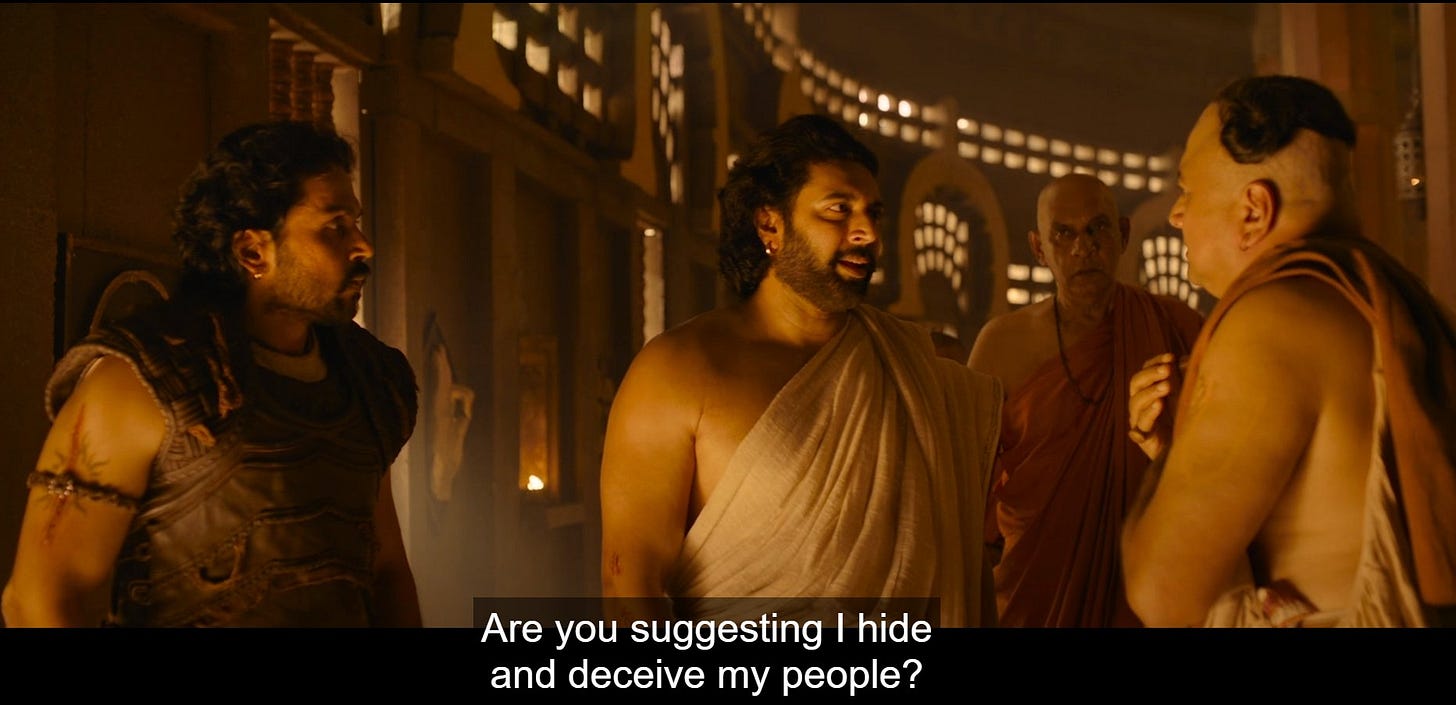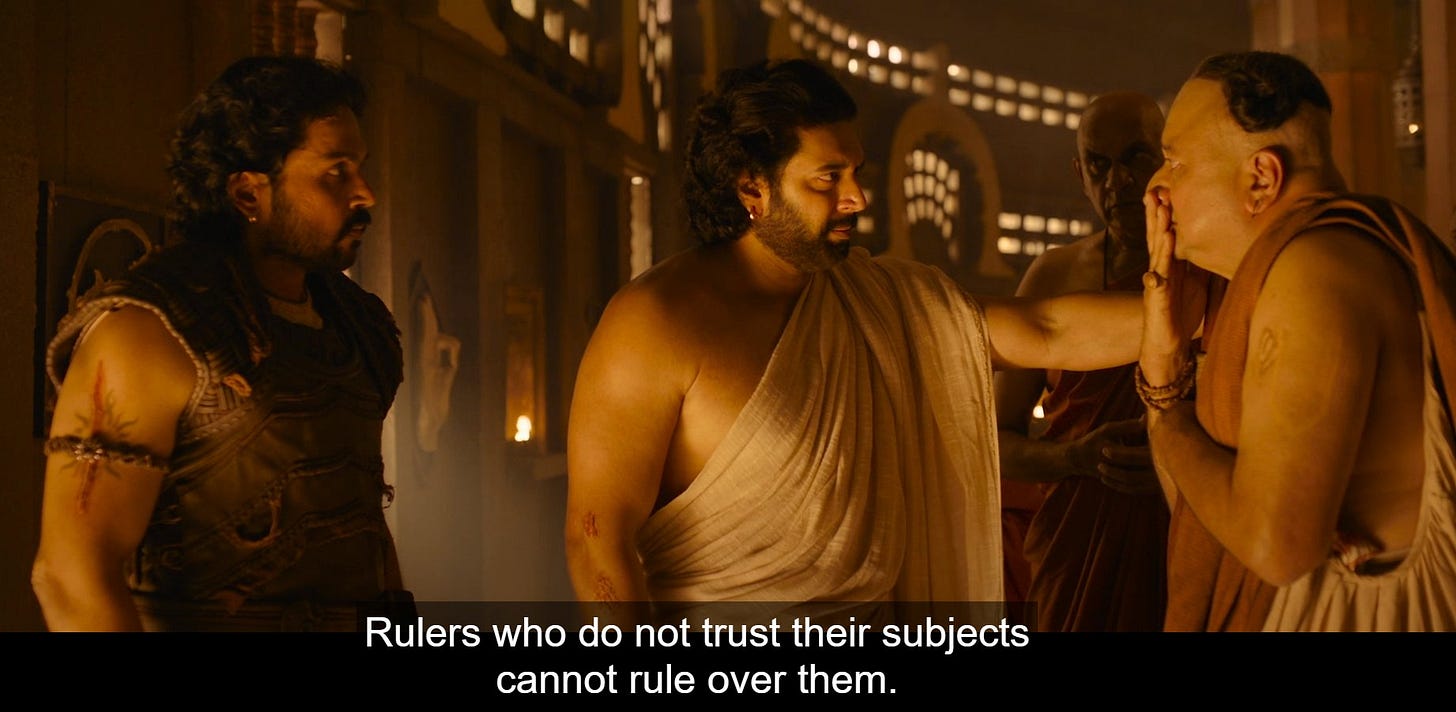Ponniyin Selvan, the bestselling Tamil novel of all time, remained every filmmaker’s dream project. Over decades, from MGR to Kamal, many held the filmmaking rights for the magnum opus. But after Kalki’s works were nationalized, these rights made little sense and anybody were free to make a movie out of the book.
But, no filmmaker was touching this most cherished magnum opus, due to its sheer volume and plot density and the difficulty in adapting this novel to the film medium. Even Mani Ratnam was convinced only after seeing the Box Office success of Baahubali that managed to hold the attention for its plot over two parts and he decided to replicate the Baahubali model.
Writer Jeyamohan was roped in for the screenplay adaptation, as was Elango Kumaravel of Abiyum Naanum fame. With a decent budget, an amazing cast and crew, with ARR’s music, expectations were mounting sky high on the film adaptation.
The expectations of book readers
Now, right from Harry Potter to Lord of The Rings, readers of the novel have never been fully satisfied with the movie adaptation. Because the movie on the screen can never match up to the movie already on your mind, based on the book. So the criticisms came pouring in for PS film too - ever since the first look posters and trailers came out.
For instance, many had questioned that nowhere in the novel was “Semba” mentioned as Vandhiyathevan’s horse’s name. Infact, since he kept changing horses, he had no specific attachment to one particular horse. Also, one scene from the PS trailer that portrayed Karikalan, Arulmozhi and Vandhiyathevan together was criticized as the three characters never had a “combination” scene in the novel.
But are these criticisms fair? A film adaptation of a novel is NOT an exact scene-by-scene picturization of the source text. Expecting this will only lead to disappointment! The visual medium needs to have its own creative liberty, its own dramatic elements, to hold interest.
A novel is unlimited - every person imagines the scenes, the characters very differently. But the visual medium is limited. Everyone sees the same picture on the screen. The biggest barrier to enjoying the film on screen is the movie that is already playing on our minds!
It’d be unfair to criticize the film for some of the shortcomings of the medium - like subplot omissions, less screen time for beloved characters and minor plot changes for a better screenplay.
None of these changes would matter if the film adaptation did justice to the writer’s vision. Did Ponniyin Selvan movies do that?
The movie’s vision and Kalki’s vision
Kalki himself states in the novel’s epilogue that his motive in writing the novel was to signify the greatness of Cholas and their immense contributions to Thamizhagam. His novel explains in great detail how Cholas built the huge Veeranam lake, and many magnificent temples, and how Arulmozhi, after he became king, took up the task of discovering and compiling Shaivite Thirumurais with Nambiyaandar Nambi.
Was there a hint of any of these in the film? Not even a single temple gopuram was prominently displayed in the film’s backdrop. There were passing references to some Vedic yagnas being conducted, and that’s about it.
Most of Ponniyin Selvan’s events from the novel take place at temples - Veeranarayana Vinnagaram, Nandipurathu Vinnagaram at Pazhaiyaarai, Mahabalipuram Shore Temple, Kodiyakkarai Kuzhagar Temple, just to state a few.
The entire list of Ponniyin Selvan spots with google map links and plot description can be found in my book “Ponniyin Selvan Route Map”: Link
Infact, Kalki finished the novel at its twist filled high point - to denote the real event of Arulmozhi giving away his crown to his uncle Madhurantaka Uttama Chola on the coronation day. It is hard to find a generous deed comparable to this one in the history of the world, in poetry or in epics. The crowning point of the story of Ponniyin Selvan is the great sacrifice made by Arulmozhi Varman. Everything in the story leads towards this great event and this is why the fifth part has been given the title, The Pinnacle of Sacrifice.
In the movie, this climactic moment should have had the same impact as Bahubali 2’s interval coronation scene. But the scene went on with no panache, no impact, as it was not written well to build up to this payoff.
Even when everybody wanted Arulmozhi to become the next king, why did Arulmozhi want to sacrifice the throne? This is never explained in the film. In the novel, he had an epiphany when he was at Thiruvarur Thyagaraja Swamy temple, hearing the stories of Lord Shiva.
The temple priests spoke of how Lord Shiva had taken the guise of a mendicant, Bhikshadanamoorthy, and begged for alms. They described the cosmic dance he performed at Thillai Ambalam; how Lord Shiva once worked as a labourer carrying sand to earn his food, how he had fooled around instead of working and was whipped by the Pandya king. All of Lord Shiva’s sacrifices had earned him the title “Thyaga Raja” meaning the epitome of sacrifice.
Arulmozhi was also introspecting on how Manu, his ancestral Chola ruler of Thiruvarur, had sacrificed his son in order to render justice to a cow. The idea that only sacrifice elevates the status of a man, starts to take root in his mind.
So, to reject the throne, and to respect the rights of his uncle, Arulmozhi had to resort to deception to handle the political climate in a diplomatic manner. He lied to everyone that he would accept the throne to ensure there’s no public outrage, and in the last minute, pulled a fast one on everyone, to make Madhurantakan (Sendhan Amudhan) the king.
Kalki had foreshadowed this brilliantly. Arulmozhi deceived both the public and the conspirators who planned to kill him, by making them believe that the elephant he was sitting on, had lost control, and he’ll eventually die. But just like his Suryavanshi ancestor Sri Ram left Ayodhya discreetly, Arulmozhi also escapes discreetly by controlling the elephant, and using this opportunity to reach Thanjavur faster.
Arunmozhi in the film though, is naive and lacks nuance. He decides to willfully stay at the Choodamani Vihaaram fully aware of the dangers which not only exposes him, but the Vihaaram and the general public to Aabathudhavis. He does all of this for a fight sequence and a heroic interval scene.
Arunmozhi also says "Ruler must trust his subjects" - this is so unlike Arulmozhi - who thought of himself only as a humble servant of the Chola Empire and never considered himself as a future emperor - not even momentarily, for he detested power and wanted to travel the world (He was 19 years old in the novel). This break in character is jarring.
Kalki's characterization has nuance - although the public love the crown prince, they can be emotional and be an obstacle towards the king's goal. The king should know better than the public. Ram is both Sathyavaakyaha (truthful) and Drudavrathaha (committed to his mission). This steadfastness is essential for a king, for he goes beyond public opinion, in fact, he should shape it by example.
Why Maniratnam avoided this foreshadowing and character development remains a mystery. Perhaps, references to Chola’s ancestors Suryavanshi Ram, Manu Needhi Chozhan, realizations within Thyagaraja Swamy temple are all tropes that are unacceptable within Dravidian-thought infused Kollywood.
In summary, Kalki’s vision with Ponniyin Selvan novel was to establish the greatness of Cholas, particularly that of crown prince Arulmozhivarman. Maniratnam’s attempt with the Ponniyin Selvan films is half hearted and his vision was focused on showing the world how he still has a command over his craft, and how artistically he can stage showdown scenes with wonderful actors like Vikram and Aishwarya Rai. For now, we can be happy that the films got made, fulfilling the vision of Mani Ratnam.
PS: ‘Ponniyin Selvan Route Map’ written by Tamil Labs delightfully retells the entire story as Kalki envisioned it, with dialogues and descriptions, but in a much shorter book (two hours reading time). Consider this book as an earnest and short retelling of Ponniyin Selvan, plus as a reference manual for the locations mentioned in the novel.
Link: https://amzn.to/3JCxhNZ






